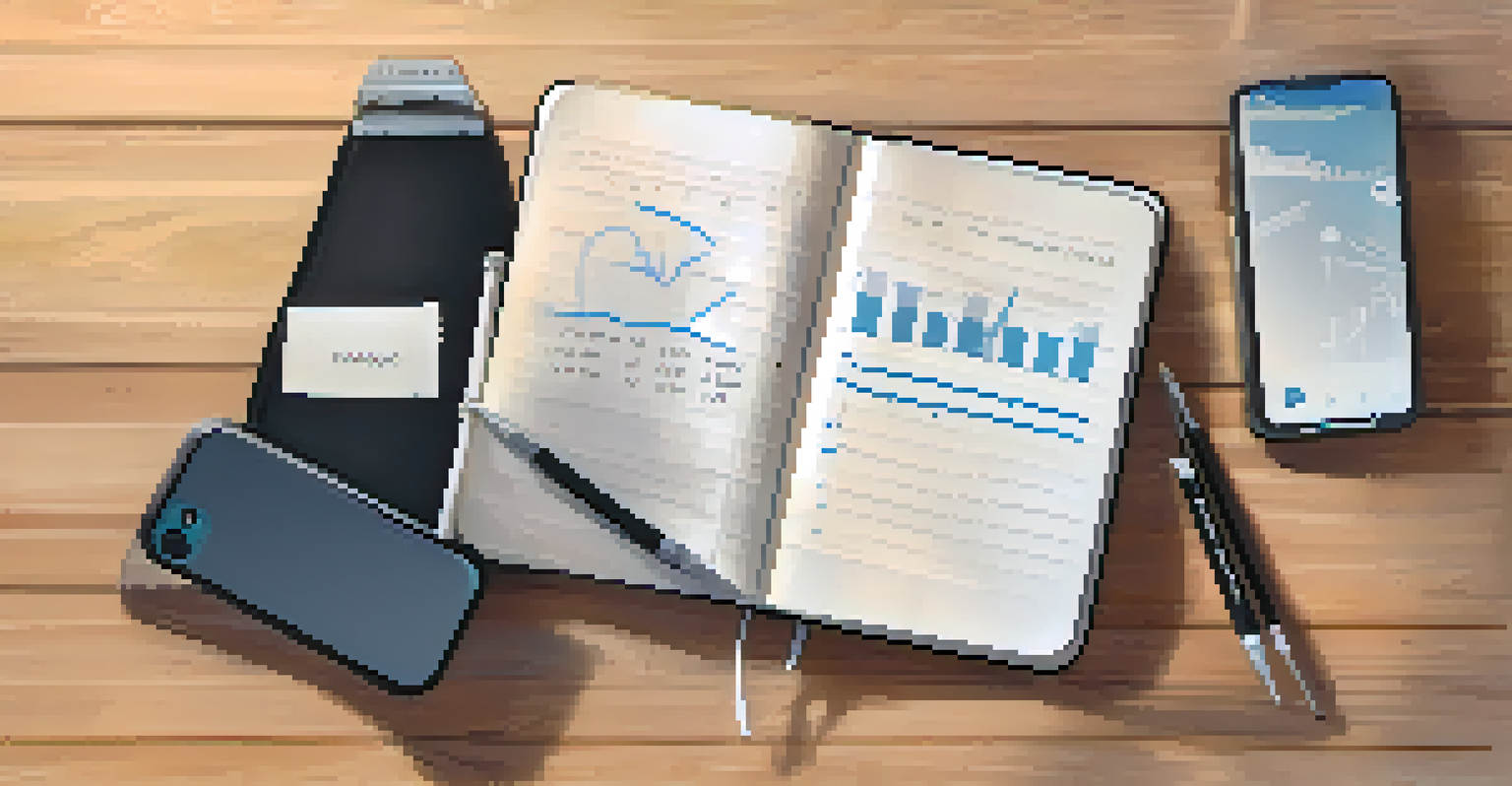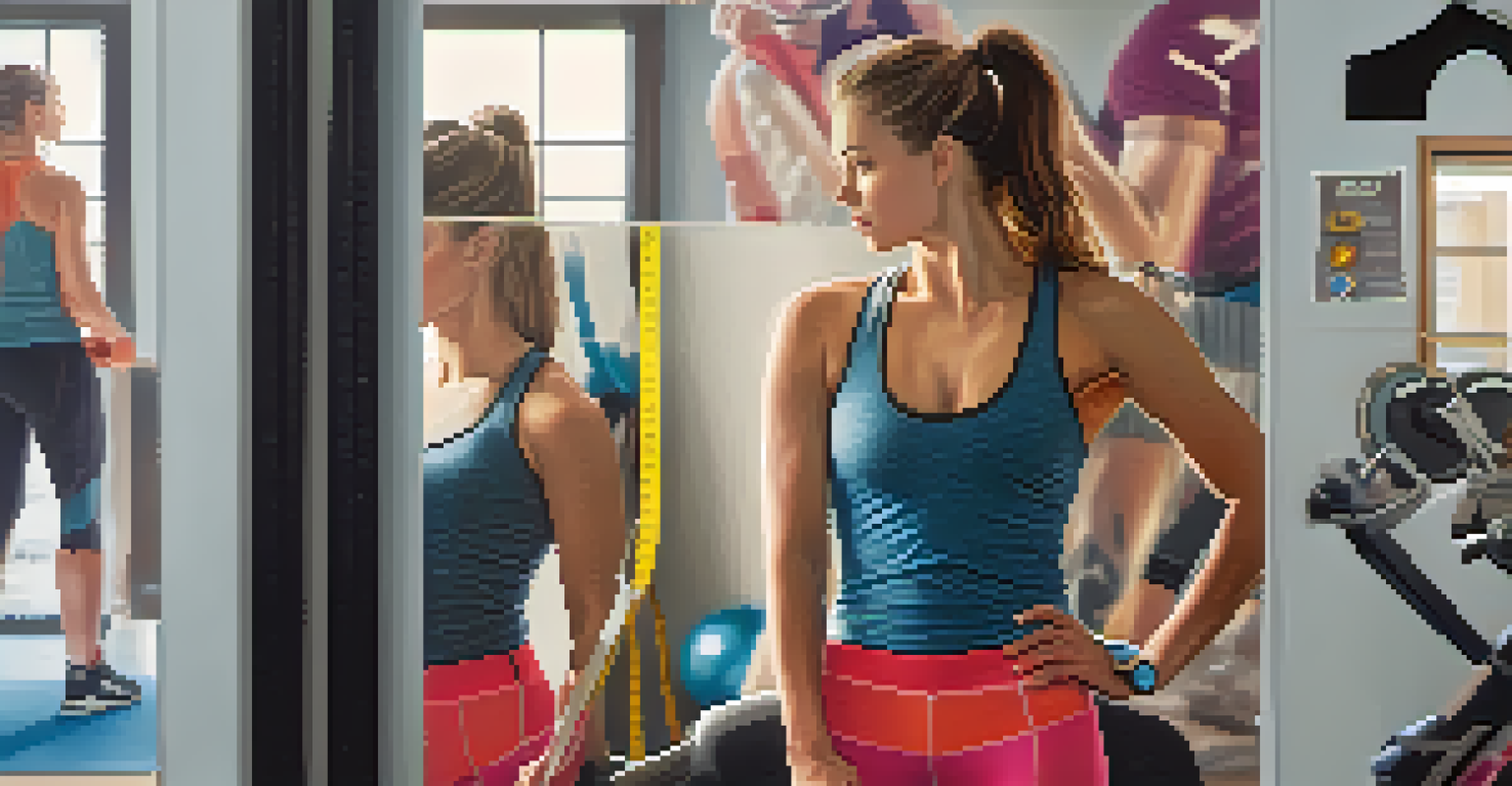Using Body Measurements to Track Your Bodybuilding Progress

Why Body Measurements Matter in Bodybuilding
Tracking your bodybuilding progress is crucial to achieving your fitness goals, and body measurements offer a tangible way to witness your gains. Unlike scale weight, which can fluctuate daily, measurements provide a clearer picture of muscle growth and fat loss. They help you understand how your body is changing, allowing for more informed decisions about your training and nutrition.
What gets measured gets managed.
By focusing on specific areas like arms, chest, waist, and thighs, you can identify where you are gaining muscle and where you may need to make adjustments. This detailed approach goes beyond aesthetics; it fosters a deeper connection with your physical transformation. Moreover, it can motivate you as you see evidence of your hard work reflected in the numbers.
Ultimately, body measurements empower you to celebrate small victories along your journey. They remind you that progress isn't always about the scale, but rather about how you feel and look overall. So, let’s dive deeper into how to effectively use these measurements.
Choosing the Right Body Measurements to Track
When it comes to tracking bodybuilding progress, not all measurements are created equal. Popular areas to measure include your biceps, chest, waist, hips, thighs, and calves. Each area provides insight into different aspects of your physique, revealing where muscle gains are occurring or where fat might be lingering.

For example, measuring your arms can show the effectiveness of your arm workouts, while tracking your waist can indicate changes in body fat percentage. It’s essential to choose measurements that align with your personal goals. If your aim is to build a bigger chest, focus on that area as a primary metric.
Body Measurements Enhance Tracking
Tracking body measurements provides a clearer picture of muscle growth and fat loss than scale weight alone.
Consider creating a baseline by taking measurements at the start of your bodybuilding journey. This way, you can easily track changes over time and adjust your training regimen as needed. Consistency in measurement locations and techniques is key to obtaining accurate results.
How to Take Accurate Body Measurements
Accurate body measurements are vital for tracking progress effectively. Start by gathering a soft measuring tape, a notepad, and possibly a friend to help you. When measuring, ensure the tape is snug but not too tight, and always measure at the same point on your body each time to maintain consistency.
Success is the sum of small efforts, repeated day in and day out.
For instance, when measuring your biceps, flex your arm and wrap the tape around the thickest part. Similarly, for your waist, measure at the narrowest point or just above your belly button. It's also helpful to take measurements at the same time of day, ideally in the morning before eating, to avoid fluctuations caused by food and water intake.
Don’t forget to record your measurements in a dedicated notebook or an app. This way, you’ll have a clear reference to see how your body is evolving over weeks and months, helping you stay motivated and focused on your goals.
Establishing a Measurement Routine
Like any good habit, establishing a routine for taking body measurements can enhance your tracking process. Aim to measure your body every 2 to 4 weeks, allowing enough time to notice significant changes without becoming frustrated by minor fluctuations. This consistency will help you stay aligned with your bodybuilding journey.
Consider setting a specific day and time for your measurements. Perhaps Sunday mornings work best for you, as it can serve as a motivational kick-start to the week ahead. This predictability will make it easier to remember and prioritize your measurements.
Regular Measurement Routine Needed
Establishing a routine for taking measurements every 2 to 4 weeks helps monitor significant changes effectively.
Additionally, consider taking progress photos alongside your measurements. Visual documentation can provide a powerful perspective on your transformation, often revealing changes that numbers alone might not capture. Combined, these methods offer a holistic view of your progress.
Analyzing Your Measurement Data
Once you’ve gathered your body measurements, it’s time to analyze the data. Look for trends over time—are your biceps getting bigger? Is your waist shrinking? By charting these changes, you can assess the effectiveness of your training and nutrition strategies.
If you notice that certain areas aren't changing as expected, it might be a signal to evaluate your workout routine or dietary habits. For instance, if your thigh measurements haven’t budged, consider incorporating more leg exercises or adjusting your calorie intake.
Remember, it’s essential to approach this analysis with a positive mindset. While it’s crucial to be honest about your progress, also celebrate the small wins and improvements. Bodybuilding is a journey, and every inch gained or lost contributes to your overall success.
Adjusting Your Training Based on Measurements
Your body measurements can serve as a compass to guide your training regimen. If you find that your shoulders are lagging behind, you might want to incorporate more shoulder-focused exercises like overhead presses or lateral raises. This targeted approach ensures that you’re not just working hard but also working smart.
Additionally, if you notice unwanted fat accumulation in certain areas, it may be time to reevaluate your nutrition and cardio routines. Sometimes, small adjustments, like increasing your protein intake or adding more high-intensity interval training (HIIT), can yield significant results.
Adjust Training Based on Data
Using body measurements as feedback allows for tailored training adjustments to align efforts with desired outcomes.
Ultimately, using your measurements as feedback allows for a tailored approach to bodybuilding. This way, you are continually aligning your efforts with your desired outcomes, making your journey more efficient and enjoyable.
Staying Motivated Through Measurement Tracking
Tracking body measurements can be a powerful motivator on your bodybuilding journey. When you see tangible results, it reinforces the effort you put into your workouts and nutrition. Set small, achievable goals for each measurement to keep your spirits high and your focus sharp.
For example, if your goal is to increase your arm size by half an inch, create a plan that includes specific exercises and nutrition strategies aimed at that result. Celebrate when you hit these milestones, whether it's treating yourself to a new workout outfit or a fun day out.

Moreover, sharing your progress with friends or a supportive online community can enhance motivation. Celebrating others’ victories and receiving encouragement can create a positive feedback loop that keeps you inspired to push through challenges.